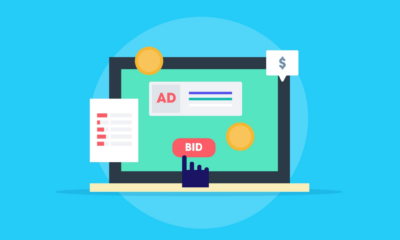MARKETING
Create a B2B GTM strategy that buyers, execs and revenue teams love

“What is the right go-to-market (GTM) strategy(ies) for our business?”
This is a common question being debated and discussed across the C-suite today (note: not just in sales and marketing meetings). In B2B, GTM strategies have been a part of company planning forever. So why is GTM confounding sales, marketing and product leaders and rising to the top of the CXO agenda? At a macro level, let’s break down what’s happening:
- The B2B buying-selling process is now predominantly digital and remote, with buyers conducting up to three-quarters of their research before engaging a B2B sales pro. Buyers are in control, throwing chaos into the traditional sales, marketing, customer success and product roles and strategies.
- As a result, B2B sales pros do not have the same level of access to prospects putting the burden on marketing and increasingly on product data and tools to play a much larger role in identifying, engaging and supporting accounts and buyers through their purchase journey.
- At the same time, economic and customer consumption models are shifting. Software-as-a-Service, Annual Recurring Revenue and cloud delivery and infrastructure are models CEOs crave and investors expect to maximize revenue and profits. No longer are we selling a product and moving on. Renewal and lifetime value are critical metrics.
Other than these accelerated changes, it’s business as usual!
Get the daily newsletter digital marketers rely on.
Defining the role of B2B GTM strategies
GTM strategy scope and definitions vary based on your company size and solution sophistication, the state of the markets you compete in, and how you develop, deliver and bring your products and services to market. To gain perspective on GTM strategy development, here are a few different definitions.
Gartner, respected market research and advisory firm, defines GTM this way:
- A GTM strategy is a plan that details how an organization can engage with customers to convince them to buy their product or service and to gain a competitive advantage. A GTM strategy includes tactics related to pricing, sales and channels, the buying journey, new product or service launches, product rebranding or product introduction to a new market.
To put a fine point on the need for GTM strategy evolution in a buyer-driven world, here is an added view that I have adopted:
- A GTM strategy is a well-crafted plan that is embraced by an organization, detailing how the company should engage with its market, its customers and prospects, its partners and key go-to influencers to win their hearts, minds, and business. The result of an effective GTM is witnessing buyer adoption, signing on and expanding customers and creating authentic market advocacy for the ‘new way.’
What is consistent in GTM definition is having an orchestrated, integrated, and comprehensive GTM strategy across your company to better identify, win and create lasting customer relationships and grow revenue. This is different than the last few years when companies have spent countless resources and time focused on trying to align sales and marketing.
Read next: 4 ways to build a successful ABM strategy
How to diagnose and identify the right GTM strategy
GTM strategies most often miss the mark because of their misalignment with markets and customers. In their new book “MOVE: The 4-Question Go-to-Market Framework,” authors Sangram Vajre and Bryan Brown accurately state that GTM is radically broken for today’s B2B revenue models, markets and customers. The “MOVE” authors also identify signs your business is stuck and in need of a GTM makeover providing a simple way to diagnose your challenge.
- “Problem-market fit” – the company is creating products but can’t market or sell effectively (I hear this frequently from CXOs and revenue leaders, “we just need pipeline”).
- “Product-market fit” – the team is selling your solution to organizations but can’t renew customers predictably.
- “Platform-market fit” – the company is renewing customers on their current product offering but can’t expand or upsell new solutions.
These are important diagnostic tools on where and how to get started on creating and/or re-thinking your GTM strategy.
The essential ingredients in a GTM strategy
A GTM strategy is a breathing, living thing that must constantly be fed, managed and evolved. It’s comprised of many different components that have to be fused together to maximize its impact. Let’s break down the essential ingredients and walk through using a methodical approach to developing a GTM strategy.
- Understand the market landscape and drivers: The most important way to build an effective GTM is to have your teams and leaders relentlessly and consistently understand what markets and customers are doing and saying. Leaders should anticipate and look for opportunities to capitalize as markets and customer priorities and needs change. Shifts in markets and needs are the number one reason companies invest in new vendors and solutions.
- Define ideal customer profile (ICP) accounts/type of organizations: Through this intensive market pulsing process, this is where the team spends time identifying the right ICP as the best organizational fit for your current and future solutions. NOT who you dream of buying your product but the type of accounts in the geos and industry segments that are both able and ready to use your solution.
- Capture and embed ICP personas, mindset, priorities and needs: Accounts don’t buy anything, people do. So, the next step is to understand the makeup of the buying committee. This means understanding who are the decision-makers, the influencers, the potential deal blockers and the specific job titles and roles to partner with to win and grow business. Once the ICP roles are identified, understand the individual roles’ and collective buying groups’ priorities and needs and how decisions are made.
- Company positioning — role and value: Using intel collected and analyzed in your market research phase, now you must articulate your company’s role and value vis-à-vis other players and alternative solutions in the market(s) you serve. This well-captured positioning articulation, with consistent amplification, helps your buyers better understand where you fit and what your company’s unique value and purpose is.
- Solutions definition, messaging and packaging aligned with your target buyers’ needs and priorities: Your prospective buyers need to be able to quickly assess your offerings and grasp how your solution(s) can meet their priorities and needs. By focusing on your ICP’s predominant use cases and needs, amplifying how you uniquely solve their priorities, and packaging your products in an easy to buy and adopt manner, you increase your relevancy and likelihood of becoming/remaining a preferred solution.
- GTM point of views (POVs) and beliefs: To further increase your relevancy and raise your company and solutions viability, it has never been more important to consistently publish and share content with valued insights to your ICP audiences. Arming your markets and teams with valuable information that helps articulate the why, the what, when and how increases your markets’ and buyers’ confidence and belief in your value.
- Sales, company and customer enablement: All this GTM development work has little impact if you do not prepare your front-line and supporting teams on how to execute and add value to the strategy. Building these teams’ knowledge and confidence not only ensure consistent in-market delivery but also bolsters the inputs required to continue to evolve and align with market and customer needs and opportunity.
- Change management framework to ride shotgun with GTM: Last, first, and everything in between is infusing change management practices into GTM development and rollout. Not every team member will adapt nor adopt at the same pace with the same vigor. Like any important change initiative, a proper change management framework should be integrated into GTM development processes, ongoing communications, enablement, and even the recognition and reward systems.
Optimizing and advancing your GTM is an always-on team sport
It is critical that this is not a once every ad hoc or occasional effort. Your GTM strategy and the core ingredients must be constantly optimized and evaluated for impact by key stakeholders. The organizations who build their GTM strategy(ies) around the largest and best market opportunity and customer fit stand to win much bigger, especially in a buyer-driven world.

Opinions expressed in this article are those of the guest author and not necessarily MarTech. Staff authors are listed here.




![Scale Efforts and Drive Revenue [Webinar] AI & Automation for SEO: Scale Efforts and Drive Revenue](https://articles.entireweb.com/wp-content/uploads/2024/10/Scale-Efforts-and-Drive-Revenue-Webinar-400x240.png)
![Scale Efforts and Drive Revenue [Webinar] AI & Automation for SEO: Scale Efforts and Drive Revenue](https://articles.entireweb.com/wp-content/uploads/2024/10/Scale-Efforts-and-Drive-Revenue-Webinar-80x80.png)




![How to Create A Website to Sell Products In 8 Steps [+6 Expert Tips] How to Create A Website to Sell Products In 8 Steps [+6 Expert Tips]](https://articles.entireweb.com/wp-content/uploads/2024/10/1727868370_How-to-Create-A-Website-to-Sell-Products-In-8.webp-400x240.webp)
![How to Create A Website to Sell Products In 8 Steps [+6 Expert Tips] How to Create A Website to Sell Products In 8 Steps [+6 Expert Tips]](https://articles.entireweb.com/wp-content/uploads/2024/10/1727868370_How-to-Create-A-Website-to-Sell-Products-In-8.webp-80x80.webp)




![Holistic Marketing Strategies That Drive Revenue [SaaS Case Study] Holistic Marketing Strategies That Drive Revenue [SaaS Case Study]](https://articles.entireweb.com/wp-content/uploads/2024/09/Holistic-Marketing-Strategies-That-Drive-Revenue-SaaS-Case-Study-400x240.png)
![Holistic Marketing Strategies That Drive Revenue [SaaS Case Study] Holistic Marketing Strategies That Drive Revenue [SaaS Case Study]](https://articles.entireweb.com/wp-content/uploads/2024/09/Holistic-Marketing-Strategies-That-Drive-Revenue-SaaS-Case-Study-80x80.png)


You must be logged in to post a comment Login